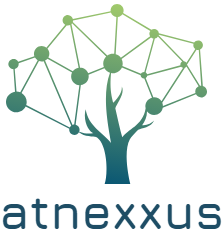data quality with atnexxus
Optimized processes thanks to excellent data.
High-quality and useful data is the foundation of modern and efficient business and work processes. The value of data is created when it is applied in the right quality to the right context. If the data is still available at the right time and in the right place, maximum added value is created.
Depending on the use case, this results in different requirements for the data and its processes. The user of the data makes the final decision as to whether the data is suitable for his purpose and of corresponding value.
We at atnexxus support you in providing the data in the right quality and at the right time to the appropriate use or user, and thus in achieving the optimal utility value of your data.
To do this, we naturally look at the data, the quality, the processes, the purpose of the data and the data collection.

The value of good data:
- Minimization of liability and compliance rules
- Better data enables simpler and otpimized processes
- High-quality data enables faster and better decisions
- Good data enables further optimization and new potentials to be tapped

Make an appointment with us:
The appointment is free of charge and without obligation.
Discuss your requirements and goals with us. We will provide you with an initial overview of the possibilities and make suggestions for action.
How atnexxus can help you

We also address all necessary and desired aspects to improve your data quality and related processes.
Depending on the scope or starting point, only individual aspects may be relevant.
We have compiled the most relevant topics from start to support for the implementation of high quality data.
Depending on the topic and tasks, this can mean a span of 1 to 2 days or a project.
How to check the data:
Structural data quality:
- Are all necessary data available, or are the corresponding fields filled in?
- Are syntax and value types according to the specifications
Content data quality:
- Have the correct values been entered, e.g. reference data help to identify
- Logical inconsistencies based on the entered data e.g. engine=electric and fuel=diesel
Linguistic / linguistic quality
- Checking whether the correct terms and product names are used in texts and text fields
- Checking texts and text fields for spelling and grammatical errors
Checking for spelling and style
Review and optimize existing processes:
Make the benefits of the data transparent:
- Determine or review users / target group of the data.
- Record the benefits of the data
- Define required format and type of data
- Consider when the data will be made available
Review existing processes:
- Record and make transparent existing processes and lived practice.
- Capture, share. Consider refinement, provision and use of data
- Consider change and update processes
Make optimizations and opportunities usable:
- Identify optimizations and further potential
- Define data quality gates, interfaces and roles
- Determine procedure for rollout
Realization:
Planning and organization:
- Plan transition to new and optimized processes
- Coaching & training of employees
Implementation:
- Select and set up software
- Throughput and quality assurance
- Rollout and commissioning of the new processes
Review of implementation
Sustainability:
- Support and review of the current status of the new processes
- Address further optimizations and opportunities

Make an appointment with us:
The appointment is free of charge and without obligation.
Discuss your requirements and goals with us. We will provide you with an initial overview of the possibilities and make suggestions for action.
Basic rules for high-quality data:
- Think of the user of the data, he evaluates the value and the quality of the data from his point of view.
- Define an ideal type of data record, a so-called golden record.
- Define clear responsibilities as well as roles and rules for working with, handling and controlling the data (data governance).
- Use software or a system that supports you in increasing the value of your data.
- Increase transparency for data workflows and raise awareness among your employees.
- Automate and simplify what you can in data workflows.
- Define your work processes and data workflows hand in hand.
- Establish consistent terms and common language (terminology).
Tips to advoid bad data and processes:
- Avoid copying if possible, but also copy & paste content. Automations are better.
- Use or define as few free text fields as possible in your applications.
- Do not enter data (e.g. metadata) without knowing the specific use.
- Avoid duplicate data or redundancies.
- Don’t think in silos. Especially when it comes to data and processes.
- Don’t establish substitute processes in place of missing data quality (e.g., organize data from elsewhere or capture it only for your own purpose).
- Avoid double meanings.
Potential consequences of bad data and data processes:
- There is no reliance on the data and its evaluation, e.g., for controlling data.
- Substitute processes are found and established instead of the benefit of central data.
- Many complaints and returns that are not technically related.
- A lot of time applied to finding the right data.
- Data must be checked and adjusted before each use.
- Data is often transcribed and copied. There are few automated processes.
- The person capturing data does not know the context of the data being captured.
- Data is captured to meet fields and specifications without understanding them.
- Market numbers and or measuring marketing actions is not reliable.
- It is unclear who uses or benefits from what data in the organization.
- Creating and interpreting reports and key figures is time-consuming and can only be done after the data has been corrected.








